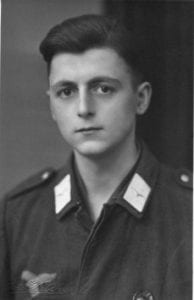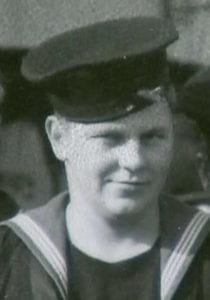
What do you think of when someone mentions World War 2 today? Do you think of a time long ago, when the world was full of uncivilized, war mongering people? Do you admire the relics in museums and read stories in history books without much thought? Do you think of it as a conflict that only impacted far away countries? These were some of the ways that I perceived WWII for a long time, in the same way that people look upon most events that haven’t directly impacted them – with interest, but without a true grasp of their importance. I feel this is the case with many historical events we are taught about in school, as we are just too distant from them to understand what really happened.
I now realize this is a dangerous thing, because if we stay distant from our ancestors mistakes, we may end up repeating them. World War II happened over 70 years ago, and yes technology and world power has shifted, but that doesn’t mean we are now above conflict. It is not like the people from that time were any different on a base level then we are today. How do I know this? Well, it’s because through our latest PLP unit and a program known as the Memory Project, I got to meet actual veterans from WWII. These men and women, although now elderly, were once teenagers like us, and I didn’t fully realize this until I got to meet them in person. My mind was blown from of the stories they told me; some of them sounded like something out of a movie. But it was all real, long ago, and through these veterans, I now know that these events still matter today. In this post, I am going to share with you my experiences during the our PLP World War II Unit, meeting these veterans, recording their stories, and answering our driving question of:
What is the Legacy of WWII in Canada?
Canada’s Naval Legacy – My First Podcast
Recording the answers to our driving question is just as important as discovering it. We need to make sure that the incredible interviews we conducted with the veterans don’t go to waste, and that others can learn from their stories as well. Now we could have made a video to do this, but visuals can be distracting and limit individual interpretation, so we decided to make podcasts instead. This was my first time making an all audio product, and let me say, it was a blast. Who knew that you can create a more meaningful product with less to work with? Anyways, you can check out my podcast, or if you’d like, my classmates podcasts below:
WWII – The Domino Effect
World War II was fought by 21 countries, and overall contained 100 separate battles over the course of six years. If you also look at all of the events without combat, smaller battles, government jobs outside the war… yeah, it’s a pretty long timeline. It’s also confusing, because countries like Germany would be fighting on three fronts at once, so trying to connect every little detail is almost impossible. Luckily, we got to learn about the biggest events during our unit, which I have made a timeline of below. Notice how every event plays into the next… maybe that domino effect is still going on today?

Click the tabs below to read more about these events
Some helpful resources from our unit, and from my personal experience:
A stunning look into what famous historical footage such as Nazi speeches and the battles of Normandy looked like when they actually happened.
For those not interested in the little details, WWII in colour gives a concise and comedic look into this conflict with a world wide perspective.
WWII was the most deadly conflict in human history. How deadly? This video will blow your mind with the true casualty statistics.
WWII is an event we should all know a little about, but if you are interested in the full story, then this documentary is for you.
What was Canada’s Role in the War?
Canada may have entered the war due to it’s Commonwealth ties, but their role extended much farther then a mere British Force. Canada first joined the war on September 6th, 1939, a week after Britain in a response to Germany’s invasion of Poland. It was a reluctant decision to say the least, as the last war had put an incredible strain on Canada’s economy and unity. It started with a single division being sent oversees, but the fall of France made Prime Minister William Lyon Mckenzie King realize that more had to be done. The government decided to start a massive Military, Naval, and Airforce expansion, the likes of which would end up costing them billions. Canada’s role may not have been as much on the front line as in WWI, but their contributions were crucial none the less.
Who Were the Canadians at War?
Many things could be considered a once in a life time opportunity. Getting your dream job, going to an exotic place, witnessing a natural marvel; those would all be pretty incredible. However, getting to do something like meet a living, breathing World War 2 veteran takes the idea of once in a life time to a whole new level. In our PLP class, we got to meet with two of them; one was a former German soldier named Helmut Lemke, and another (who was different depending on your group) was the Navy Coder I spoke of earlier named Svend Hansen. To think that this experience is one that kids 10 years from now will not get to have is honestly mind blowing. You can read a little about their stories below:
Svend Hansen is a former Navy Coder who was enlisted in the Royal Canadian Volunteer Reserve in 1942. He had lived in Calgary for most of his youth, and when his friends started signing up for the services after they graduated, he decided he would as well. One in particular had joined the Navy, so Svend decided to move to Saint-Hyacinthe’s Quebec to train in the Navy Signalling school. He soon completed his training as a Navy Coder, or the personnel who would decode allied messages and send them to officials, and boarded the HCMS Hepatica in Halifax. The ship then made many trips to Europe and the United States in a mission to protect supply convoys from German u-boats. He served until the end of the war in 1945, and did not experience much action in terms of combat. If he hadn’t gone on leave however, he would have assumed a role in the deadly conflict that was the Battle of the Pacific.
 Helmut Lemke is a former German Solider and member of the Hitler Youth, who came to Canada to escape the war and prosecution. Young Helmut joined the Hitler Youth before war broke out in 1939 as many young Germans at the time did. He described it more of a Boy Scouts Program than having a military related agenda, and found himself succeeding academically and living a comfortable life during this time. However, all this changed when WWII started and he was forced into conscription, despite his Mennonite faith, and was separated from his mother and siblings. During his time in Germany, he traveled across Europe and Russia in search of his mother, and eventually moved to North America to pursue a degree in architecture.
Helmut Lemke is a former German Solider and member of the Hitler Youth, who came to Canada to escape the war and prosecution. Young Helmut joined the Hitler Youth before war broke out in 1939 as many young Germans at the time did. He described it more of a Boy Scouts Program than having a military related agenda, and found himself succeeding academically and living a comfortable life during this time. However, all this changed when WWII started and he was forced into conscription, despite his Mennonite faith, and was separated from his mother and siblings. During his time in Germany, he traveled across Europe and Russia in search of his mother, and eventually moved to North America to pursue a degree in architecture.
My podcast explains the duty of Svend in more detail, but I would highly recommend also listening the rest of helmut’s story in some of my classmates podcasts.

